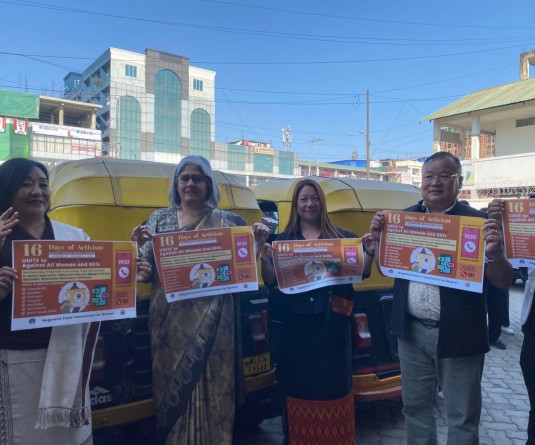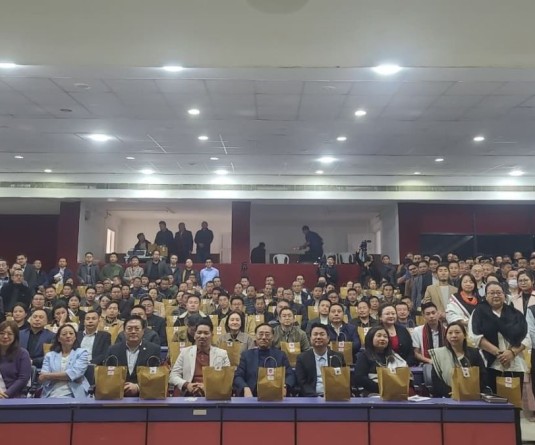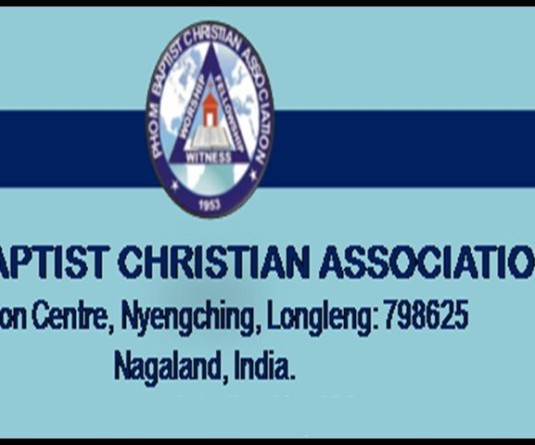
Nagaland Vision 2030 should include ending Child Labour by 2030
Morung Express News
Dimapur | June 11
World Day Against Child Labour was launched by the International Labour Organisation in June 2002 to generate greater awareness and focused effort to prevent children from falling prey to forms of work deemed detrimental to holistic development.
June 12 was marked as the day when governments, organisations, employers and the civil society around the world are encouraged to engage and understand the plight of children caught in the web of ‘earning a living’ either through coercion or compelled by circumstances.
A global phenomenon all too evident, child labour as a concern has still to fully percolate beneath the international covenants declared to protect the rights of the child.
Closer home, in Nagaland, a general air of passive disregard persists, while the society at large chooses not to acknowledge the existence of child labour as a form of injustice.
With this as the backdrop, a panel discussion was held today in Dimapur for a greater understanding of the issue at hand under the year’s theme – End Child Labour in Supply Chains.
The discussion organised by the District Child Protection Unit, Dimapur in collaboration with the Nagaland Alliance for Children and Women Rights (NACWR) opened up views on what constitutes child labour and ideas needed to engage and ponder upon for all concerned.
In the panel were Rev. Dr. Wati Aier, Principal of Oriental Theological Seminary; Shikuto Zalipu, Nagaland GB Federation; Hukheli Wotsa, President, Naga Women Hoho Dimapur; Esther Aye, Panel Lawyer and Legal Advisor to the NACWR; and Dr. Akum Longchari, Editor, The Morung Express.
According to Rev. Dr. Wati Aier, while poverty, limited education and the ‘systems’ prevailing the world over has emerged to be the causal factors, the world economy has not eased the situation either.
On this, Rev. Dr. Aier took the example of Multi National Companies (MNC) “spreading its tentacles the world over” looking for cheap labour irrespective of age. The high cost of manual labour in the developed world has made the MNCs to exploit the abundant and cheap labour available in developing economies, he said. However, in India, it need to be understood from a socio-cultural perspective and tackled accordingly, Rev. Dr. Aier added.
In the context of Nagaland, he said the issue calls for a realistic and pragmatic approach where the “churches” can play a great role. The churches, he suggested, can take up “pilot projects” focusing on marginalised children. “We may not solve the problem (entirely) yet we can achieve something. Let us begin small… the paradigm in mission has to be shifted,” he said.
Hukheli Wotsa said distinction must be made between ‘domestic labour’ and ‘child labour.’ According to her, “domestic child labour” should be given the opportunity to make a living as they are earning for their families. This must however not come at the cost of their education.
“Let them work and receive education,” she said, adding inculcating work culture and education must go hand in hand. On the practice of selling off young children, she said the general perception here is that only ‘non-Nagas’ do it “but we must remember that we do it too.”
From Naga traditional perspective, Shikuto Zalipu upheld that child labour cannot be considered illegal since in the olden days when sustenance revolved around agriculture children were taken as extra hands to toil the fields. Children were taught the arts and crafts that would sustain them on attaining adulthood.
But the onset of modernity has forced parents in remote villages to send children to urban areas in the hopes of attaining the benefits that modernity has brought. Unfortunately, in the process, “some children become victims to child labour,” he said. Calling for a collective effort to address the problem, he said every human being has a fundamental right to live with dignity.
Dr. Akum Longchari held that a deeper understanding of the circumstances that forces children away from school and home is required. Stating that there is an ongoing tension between legal and cultural understanding of the term child labour, he said the situation beckons for “a working, cultural and relevant definition that is applicable to the existing Naga context.”
“One cannot battle child labour in isolation. We cannot reduce the demand unless we understand the situation from which children are moving out of homes,” he said while adding that action must be inter-connected to the root causes. Recalling the Nagaland State Government’s invitation for public opinion towards Nagaland Vision 2030, he suggested, that the aim to end Child Labour by 2030 should be included in the Vision.
Esther Aye highlighted various the sections of law concerning the rights of children in India, while child speaker Ivitoli Swu spoke on the scenario and challenges facing child labour in Nagaland.






